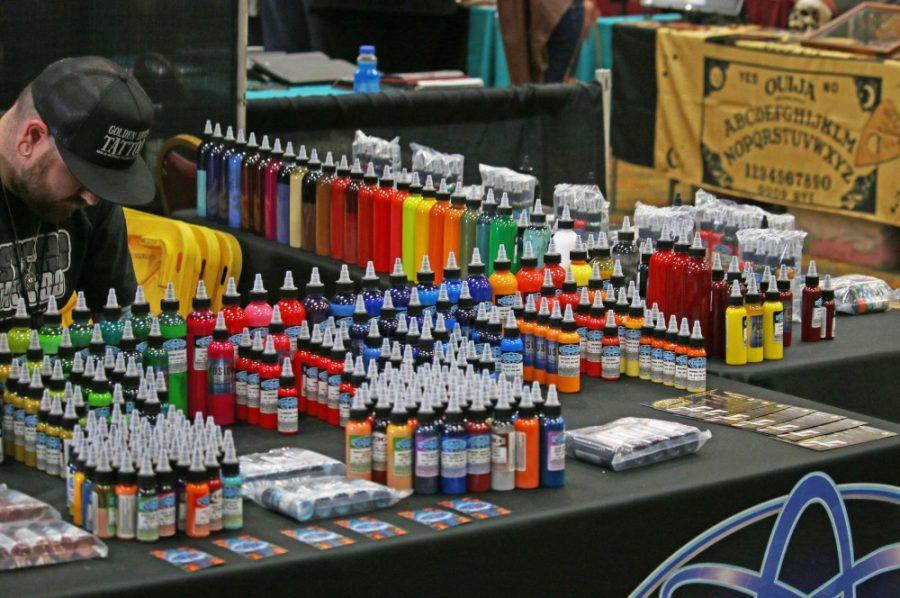One in three young adults have a tattoo — could the chemicals in their tattoo ink pose a health risk? A group of 12 University of Arizona students has set off to find out.
The students of the Environmental Health Sciences Transformative Research Undergraduate Experience program will spend the semester researching the chemicals in tattoo ink and evaluating the current research on adverse health risks under the guidance of Walt Klimecki, associate professor and interim department head of Pharmacology and Toxicology.
“There is a lot of mystery behind what actually goes into the tattoos on your skin and how much of specific chemicals companies are allowed to put in tattoo inks because they are not regulated,” said Ruby Sierra, a Neuroscience and Cognitive Science junior and Tucson native.
The students in the one-credit required colloquium will evaluate the amount of chemicals in tattoo inks (which are unregulated by the Environmental Protection Agency), examine their known toxicities and the potential health risks they could pose based on established research.
The students will also translate their research into more broadly understandable terms and present it to the public.
“For me, tattoo ink is an interesting example that students have a natural magnetism to, and that has all the typical elements in the link of an environmental exposure,” Klimecki said.
RELATED: Tattoo expo showcases ink and holds contests
Klimecki, along with the Director of the Undergraduate Biology Research Program Carol Bender, oversees the EHS-TRUE program, which is sponsored by a grant from the Environmental Health Sciences Institute at the National Institute of Health.
The program, which received funding for five years, helps provide two years of undergraduate research experience for up to 12 students at a time.
“The NIH is concerned with making sure they provide opportunities for STEM, underrepresented minority undergraduates in research in the environmental health sciences to encourage them to consider that path in their post-baccalaureate education and career choices,” Klimecki said.
The program pairs students with a laboratory related to the environmental health sciences, practicing UBRP’s “learn research by doing research” philosophy and pays their student salaries for 20 hours a week during the semester and 35 hours during the summer.
The students also take a spring and fall colloquium while in the program, with the fall course focusing on one environmental health issue and the spring focusing on personal and professional development.
“Within each of the courses, we talk about the chain of events between a potentially harmful chemical existing in the environment and all the things that would have to happen for it to end up in a disease in people,” Klimecki said. “We use examples throughout that actively involve the students.”
RELATED: No Hero, No Angel: The Jay Dobyns Story
In the past, students have studied the Gold King Mine spill and developed a bilingual public service announcement, in partnership with the City of Tucson, about the dangers of lead exposure in children.
The program also provides free tutoring and requires students maintain a 3.0 GPA while in the program.
“What we want to do in this program is we want to make our students better candidates for post-baccalaureate education, better in both knowing more about what they are getting in to but also in terms of being more competitive candidates,” Klimecki said.
Sierra, who studies the cytotoxicity of arsenic laden dust particles on airway cells in the Boitano lab, said the program did just that for her.
The program helped her connect to the scientific community through her research and attending conferences but also with the community at large through public service announcements and field work.
“I went out [to the Gold King Mine spill] and collected samples and actually talked to some of the people that were affected by that,” Sierra said.
Sierra said she also learned how to communicate her research and environmental health issues to the public.
Sierra hopes to pursue a masters degree followed by attending a medical school with the EHS-TRUE program as a cornerstone of her undergraduate experience.
Follow Randall Eck on Twitter








